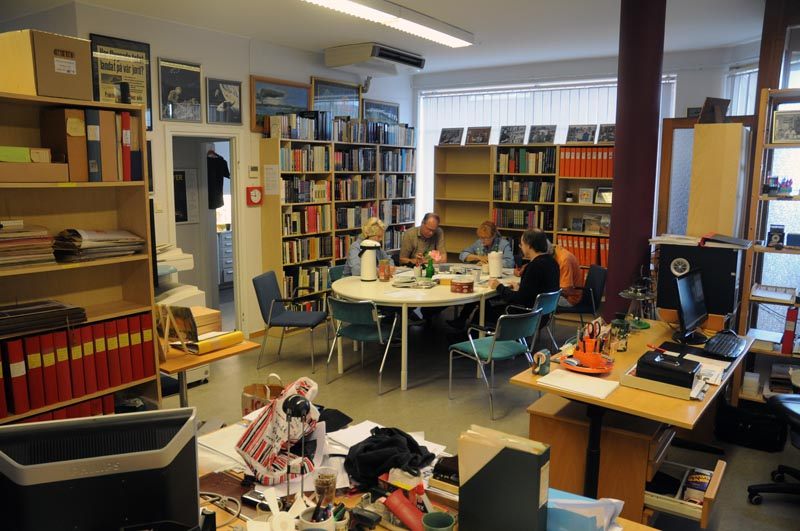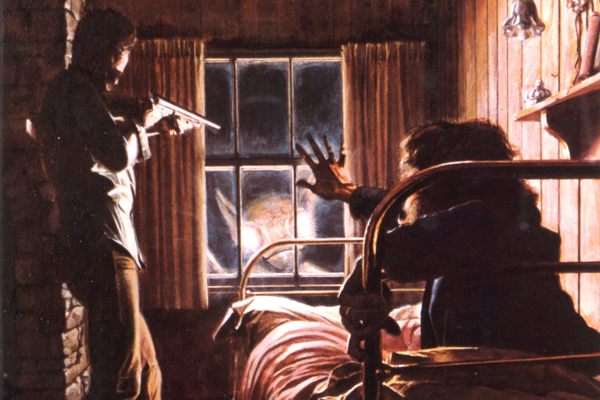There’s a Huge UFO Archive Hiding in These Swedish Apartment Cellars
And it’s surprisingly low-key.
The industrial town of Norrköping, Sweden, nestled along an inlet of the Baltic Sea, was once known for its booming textile industry. Now, decades after outsourcing muffled the city’s industrial buzz, Norrköping is known primarily as a quiet student town, dotted with repurposed factories and the snaking waterways that interweave them.
In such surroundings, it seems strange to find the world’s largest open UFO archive. Yet there it is, just a five-minute tram ride from the city center.
The Archives for the Unexplained, formerly known as The UFO Archives, are scattered throughout 10 storage facilities in the housing quarters of Ljura, a neighborhood in the city’s south. These facilities are located in the cellars of colorful, structural-functionalist apartment complexes.

As co-founder and administrative manager Anders Liljegren gives me a tour of the first storage unit, we cross paths with several young students exiting the apartment’s double-doors. Do they realize that century-old collections dedicated to the obscure and unexplained reside just beneath their feet? “Most likely not,” Liljegren laughs when I ask him. “They probably think we’re doing a really bad job of hiding a drug operation or something when we bring huge boxes to the units.”
Though the Archives for the Unexplained now boasts over 20,000 collections of animalistic phenomena from all around the world, it had very humble, local beginnings. It all started in 1973 when Anders and his two friends Hakan Blomqvist and Kjell Jonsson founded the Work Group for Ufology, a predecessor to the UFO Archives. Curious about unexplainable objects in the sky, the then 23-year-old and his colleagues ran a library out of their student apartments, hoping to create a dialogue about UFOs in Scandinavia. Over time the library expanded and the group officially became known as the Archives for UFO Research in January of 1980.
Despite assumptions that the organization is comprised of staunch believers in all things extraterrestrial, Liljegren and his coworkers prefer to take a more academic approach to their archival project. “We’ve had some bad experiences with fanatics,” he says. “It is best to have people working here who are more sociologically interested.” Liljegren has been personally involved in a wide array of research regarding Scandinavian “close encounters” and was one of the first to gain access to theretofore-secret government documents detailing the Swedish “ghost fliers” and “ghost rockets” that caused a commotion in the 1930s and 1940s.

From ancient alien theories to more contemporary hypotheses, the archive in Ljura seems to have it all. Liljegren shows me the archives’ most recent acquisition, donated by the Spanish group Centro de Estudios Interplanetarios (CEI). It is, as is written on the group’s homepage, “one of the finest and rich report files anywhere in the world with 120 large black file folders and another 30 files of cross-indexes by region.”
While I am in awe over the wealth of material from Spain, I am more taken by an old book from the USSR. As UFO research was then a banned topic, books on the subject were painstakingly put together by hand, complete with carefully composed drawings of UFO sightings. Liljegren points to a child-like drawing of an object hovering above a house. “These sightings were actually just Russia’s missile tests, but nobody knew that then. They had no idea.”

For years Liljegren and the board of the UFO Archives struggled to keep the archives streamlined to exclusively UFO-related material but as of April 2013, the organization has broadened its scope. “We get calls from random benefactors every once in a while,” he says. Somebody will call and say that they have their father’s UFO collection, for instance, and need a place to keep it safe.”
Oftentimes people offer to donate money with a caveat. “We’ll have somebody call in and offer a certain sum if we include ‘x’ and ‘y’ in the archives,” says Liljegren. Now officially known as the Archives for the Unexplained, the organization embraces material regarding anything that can be called into question, from the Loch Ness Monster, to fairies, to parapsychology, and more. They have struggled to find a place to consolidate their extensive collections and are still in search of a fitting locale. “We’ll probably stay in Norrköping,” he says, “there’s just too much to transport.”















Follow us on Twitter to get the latest on the world's hidden wonders.
Like us on Facebook to get the latest on the world's hidden wonders.
Follow us on Twitter Like us on Facebook